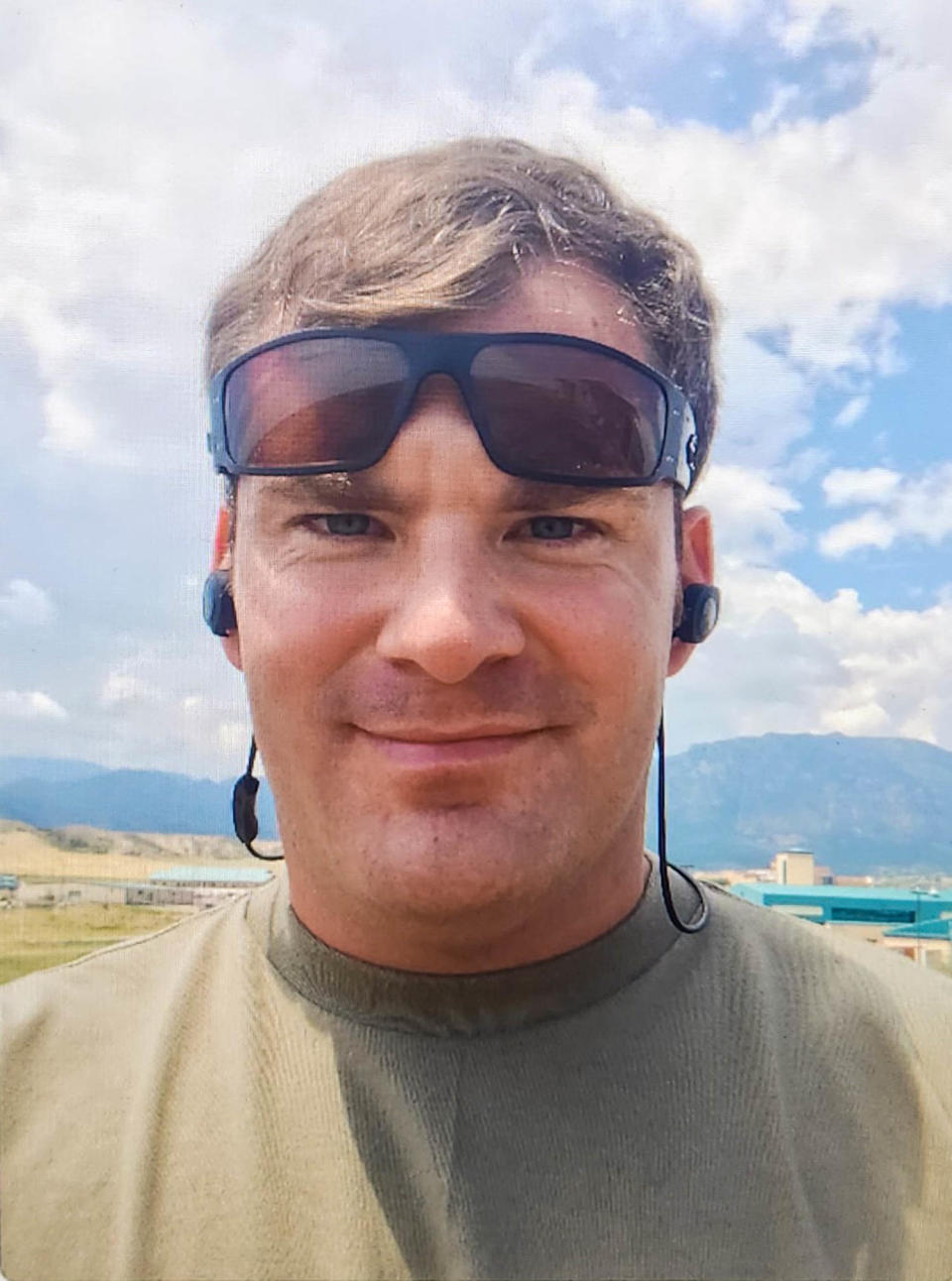The soldier who authorities believe blew up a Cybertruck on New Year’s Day in front of the entrance of the Trump International Hotel in Las Vegas used artificial intelligence to guide him about how to set off the explosion, officials said Tuesday.
Matthew Alan Livelsberger, 37, queried ChatGPT for information about how he could put together an explosive, how fast a round would need to be fired for the explosives found in the truck to go off — not just catch fire — and what laws he would need to get around to get the materials, law enforcement officials said.
“We know AI was going to change the game for all of us at some point or another, in really all of our lives,” Clark County/Las Vegas Metropolitan Police Sheriff Kevin McMahill said. “I think this is the first incident that I’m aware of on U.S. soil where ChatGPT is utilized to help an individual build a particular device.”
Advertisement
Advertisement
Las Vegas police identified Livelsberger last week as the suspect behind the blast. The Clark County coroner determined that he died from a self-inflicted gunshot wound to the head, police said.

Matt Livelsberger during deployment.
Authorities said they were able to identify his badly burned body through various means, including family DNA and tattoos.
On Tuesday, law enforcement officials showed video of Livelsberger pulling a can of what they said was racing fuel from the back of the Cybertruck and dousing the vehicle in the part of it containing explosives.
Kenny Cooper, assistant special agent in charge of the San Francisco Field Division of the Bureau of Alcohol, Tobacco, Firearms and Explosives, said Livelsberger’s self-inflicted gunshot might have caused the “fuel air explosion” by igniting the fireworks and other explosive materials in the vehicle.
Advertisement
Advertisement
He said investigators haven’t run into any purchase records or physical evidence from the scene that would indicate that Livelsberger used any type of remote-controlled detonation or sophisticated, timed-initiation system.
A spokesperson for OpenAI, which owns ChatGPT, said in a statement that it was “saddened” by the revelation its technology was used to plot the attack.
“We are saddened by this incident and committed to seeing AI tools used responsibly,” the spokesperson said. “Our models are designed to refuse harmful instructions and minimize harmful content. In this case, ChatGPT responded with information already publicly available on the internet and provided warnings against harmful or illegal activities.”
The spokesperson added that the company is aiding law enforcement with the investigation.
Advertisement
Advertisement
More in U.S.
The use of ChatGPT and other AI platforms is a rapidly growing concern for law enforcement officers, who worry about the potential for attackers to use the technology as a how-to guide.
Law enforcement’s challenges with AI were highlighted in an exclusive NBC News report that aired on “Hallie Jackson Now” late last year.
“AI takes existing problems and magnifies them. It makes them at scale and at cost,” Rebecca Weiner, New York City’s deputy police commissioner for intelligence and counterterrorism, has told NBC News. “The technology makes it easier to do the concerning stuff.”
Asked Tuesday whether law enforcement agencies should have been aware of Livelsberger’s queries of ChatGPT, McMahill said he didn’t know whether the capability to track how someone uses artificial intelligence exists yet.
Advertisement
Advertisement
Las Vegas and New York law enforcement officials have told NBC News that they don’t yet have cooperation from AI services to get alerted when someone starts to ask what one would need to conduct an attack or build an explosive.
Last week, authorities revealed that in an app found on one of two phones in the Cybertruck, Livelsberger criticized the U.S. government and appeared to acknowledge he blew up the vehicle on purpose.
Two letters in the phone app suggest a possible motive, authorities said. In one, he told “fellow service members, veterans and all Americans” it’s time to “wake up” because the country’s leadership is “weak” and “only serves to enrich themselves.”
A second letter appeared to shed more light on Livelsberger’s mentality. In it, he said that the explosion was “not a terrorist attack” and that Americans pay attention to only “spectacles and violence.”
Advertisement
Advertisement
An additional, six-page “manifesto” was found on his phone, officials said Tuesday.
In the document, Livelsberger laid out various grievances, including problems with the “current administration,” officials said. He also wrote that graphic encounters from his military experiences replayed in his head in a loop and that he had nothing to live for, officials said.
Livelsberger was on approved leave from the military when he rented the Tesla Cybertruck and drove from Colorado to Las Vegas, according to law enforcement officials. Fireworks and gas in the bed of the truck ignited after he parked it just outside the Trump hotel’s entrance.
If you or someone you know is in crisis, call or text 988 to reach the Suicide and Crisis Lifeline or chat live at 988lifeline.org. You can also visit SpeakingOfSuicide.com/resources for additional support.
This article was originally published on NBCNews.com
EMEA Tribune is not involved in this news article, it is taken from our partners and or from the News Agencies. Copyright and Credit go to the News Agencies, email news@emeatribune.com Follow our WhatsApp verified Channel




